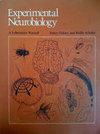章鱼大脑的扩散MRI连接
IF 1.8
4区 医学
Q3 MEDICINE, RESEARCH & EXPERIMENTAL
引用次数: 3
摘要
利用高角度分辨率扩散磁共振成像(HARDI)和纤维束状图分析,我们绘制了章鱼大脑的中尺度连接体。这种头足类动物的大脑与脊椎动物的大脑有质的不同,但它表现出复杂的行为,复杂的感觉系统和高认知能力。在过去的60年里,人们对章鱼的大脑解剖进行了广泛而详细的研究,包括经典的组织切片/染色、电子显微镜和注射染料的神经束示踪。这些研究阐明了解剖结构内部和结构之间的许多神经元连接。基于弥散性磁共振成像的神经束造影利用一种定性不同的方法来追踪大脑内部的连接,并提供便于定量分析的解剖结构和连接的三维图像。在三个样本的3D MR图像中,分别分割了25个独立的脑叶,包括垂叶中的所有五个子结构。这些包裹被用来测定叶之间的纤维示踪。由扩散MRI数据构建的连接矩阵与早期研究的结果基本一致。一个主要的区别是,竖叶和更基础的食管上结构之间的连接在文献中没有被MRI发现。总的来说,扩散MRI记录了25个不同脑叶之间的92个连接:53个连接在食管上叶之间,26个连接在视叶和其他结构之间。这些代表了章鱼大脑中尺度连接体的开始。本文章由计算机程序翻译,如有差异,请以英文原文为准。
Diffusion MRI Connections in the Octopus Brain
Using high angle resolution diffusion magnetic resonance imaging (HARDI) with fiber tractography analysis we map out a meso-scale connectome of the Octopus bimaculoides brain. The brain of this cephalopod has a qualitatively different organization than that of vertebrates, yet it exhibits complex behavior, an elaborate sensory system and high cognitive abilities. Over the last 60 years wide ranging and detailed studies of octopus brain anatomy have been undertaken, including classical histological sectioning/staining, electron microscopy and neuronal tract tracing with injected dyes. These studies have elucidated many neuronal connections within and among anatomical structures. Diffusion MRI based tractography utilizes a qualitatively different method of tracing connections within the brain and offers facile three-dimensional images of anatomy and connections that can be quantitatively analyzed. Twenty-five separate lobes of the brain were segmented in the 3D MR images of each of three samples, including all five sub-structures in the vertical lobe. These parcellations were used to assay fiber tracings between lobes. The connectivity matrix constructed from diffusion MRI data was largely in agreement with that assembled from earlier studies. The one major difference was that connections between the vertical lobe and more basal supra-esophageal structures present in the literature were not found by MRI. In all, 92 connections between the 25 different lobes were noted by diffusion MRI: 53 between supra-esophageal lobes and 26 between the optic lobes and other structures. These represent the beginnings of a mesoscale connectome of the octopus brain.
求助全文
通过发布文献求助,成功后即可免费获取论文全文。
去求助
来源期刊

Experimental Neurobiology
Neuroscience-Cellular and Molecular Neuroscience
CiteScore
4.30
自引率
4.20%
发文量
29
期刊介绍:
Experimental Neurobiology is an international forum for interdisciplinary investigations of the nervous system. The journal aims to publish papers that present novel observations in all fields of neuroscience, encompassing cellular & molecular neuroscience, development/differentiation/plasticity, neurobiology of disease, systems/cognitive/behavioral neuroscience, drug development & industrial application, brain-machine interface, methodologies/tools, and clinical neuroscience. It should be of interest to a broad scientific audience working on the biochemical, molecular biological, cell biological, pharmacological, physiological, psychophysical, clinical, anatomical, cognitive, and biotechnological aspects of neuroscience. The journal publishes both original research articles and review articles. Experimental Neurobiology is an open access, peer-reviewed online journal. The journal is published jointly by The Korean Society for Brain and Neural Sciences & The Korean Society for Neurodegenerative Disease.
 求助内容:
求助内容: 应助结果提醒方式:
应助结果提醒方式:


